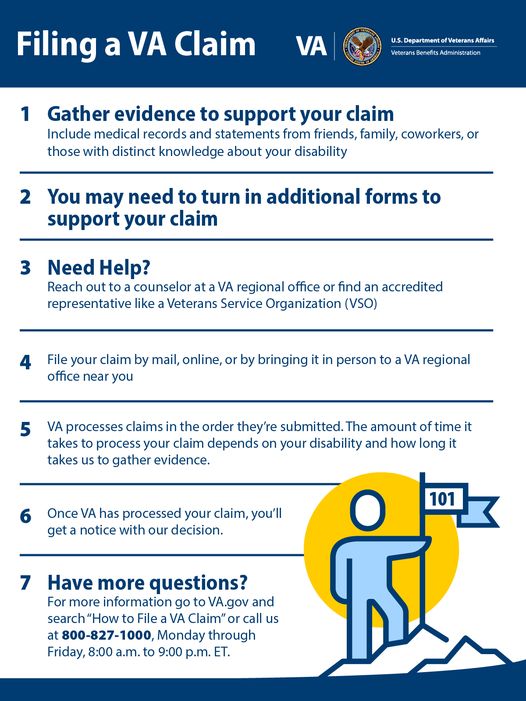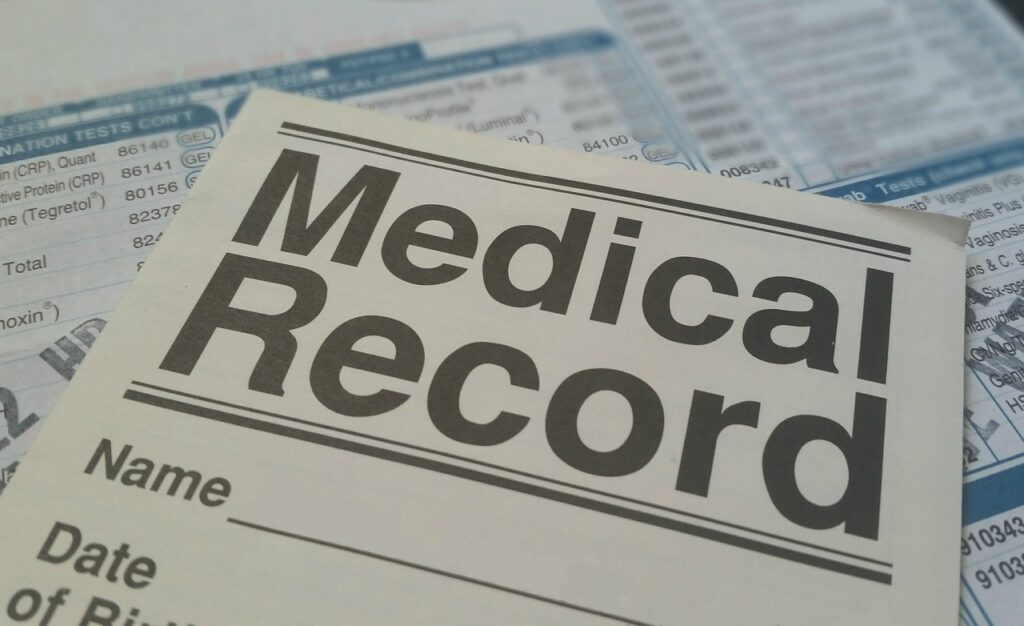Applying for disability compensation from the U.S. Department of Veterans Affairs (VA) can be time-consuming and frustrating. This frustration is made worse by the time it takes to get a decision. Often, this wait is extended because needed information is missing. When that happens, additional time passes as the Veteran and VA search for that information. One way to avoid this additional time and help the VA complete your claim faster is to present all the information needed when initially applying for veterans benefits. This is often referred to as presenting a completed claim. With all the needed information, VA claims processors can focus on rendering the decision, avoiding “back-and-forth” communication with the Veteran about what is missing.

Required Documentation for Veterans Benefits from the VA
To apply for disability compensation, you have to demonstrate three items. Here is a listing of these items and the documentation used to support each item.
Item 1 – Demonstrate that you were in the military when the injury (or disability) occurred and that you are eligible.
Documentation:
• DD214 – your discharge document has your dates of service and type of discharge
• Military Personnel Records – among the information these contain are the locations of your service and dates you were there. This will be important if you are demonstrating you were in a particular place during specific dates.
Item 2 – Demonstrate the incident – injury/disability – occurred.
• Military Medical Records—Ideally, when you were hurt, you got medical attention, and this would be recorded in your records.
• Lay statements – if you were not treated and, therefore, have no evidence of your injury in your medical records, lay evidence can be provided. These are statements from witnesses who saw the injury occur.
Item 3 – Connect your present condition to injury while in the service.
• Medical records (Military or non-military) that document the connection
• Lay statements that demonstrate the connection and severity.

How to Speed Up Your Veterans Benefits Claim?
If you don’t have them, your military-related documents – DD214, Military Personnel Records, and Military Records – can be obtained from NARA, the National Archives and Record Administration.
You should be able to obtain your non-military records from your private provider. If you want the VA to get these for you, complete these forms and include them in your application for disability compensation:
• VA Form 21-4142, “Authorization to Disclose Information to the Department of Veteran Affairs (VA)”
• VA Form 21-4142a, “General Release for Medical Provide information to the Department of Veterans Affairs (VA)”
Lay evidence refers to statements written by people who are not healthcare professionals that support your application for disability compensation. These statements can be provided by anyone who has knowledge of the situation or events described in the application. The most common sources of lay evidence are:
• The Veteran – explaining the effects of the incident that go beyond the medical evidence.

• Family members – providing observations about the Veteran and how the injury or disability has affected their daily life and relationships.
• Friends – providing observations about how the events have changed their interactions and relationships with the Veteran.
• Fellow Veterans – statements from fellow Veterans are often called “buddy statements.” Often, they explain events they witnessed which were not reported and, therefore, not documented in official records.
• Co-workers – describing their observations about the Veteran’s work live and relationships
Statements to support your application can be provided on VA Form 21-10210 Lay/Witness Statement. However, it is not necessary to use the form. Most statements are written, typed, or printed on plain paper.
The most helpful statements describe events, symptoms, severity, or impacts related to the application. They provide information that is not in the official records, or that is not explained sufficiently. These statements and the detailed descriptions can “fill in the gaps” in the official records, present information not reported, or provide context that helps the VA better appreciate the situation that led to the Veteran applying for disability compensation.
Bottomline: Submitting a complete application is the best way to help the VA render a decision on your claim as quickly as possible.
About the Author Paul R. Lawrence
Paul R. Lawrence, Ph.D., served as Under Secretary of Benefits at the U.S. Department of Veterans Affairs from May 2018 to January 2021. He is the author of “Veterans Benefits for You: Get what You Deserve,” available from Amazon.

Read About Other VA Updates
If you enjoyed reading the article “What Can I Do to Help Expedite My Claim For My Veterans Benefits From VA?”, we invite you to read the stories of VA Updates on our blog. In addition to our profiles of celebrities who served, we share military book reviews, veterans’ service reflections, famous military units and more on the TogetherWeServed.com blog. If you are a veteran, find your military buddies, view historic boot camp photos, build a printable military service plaque, and more on TogetherWeServed.com today.
.

0 Comments